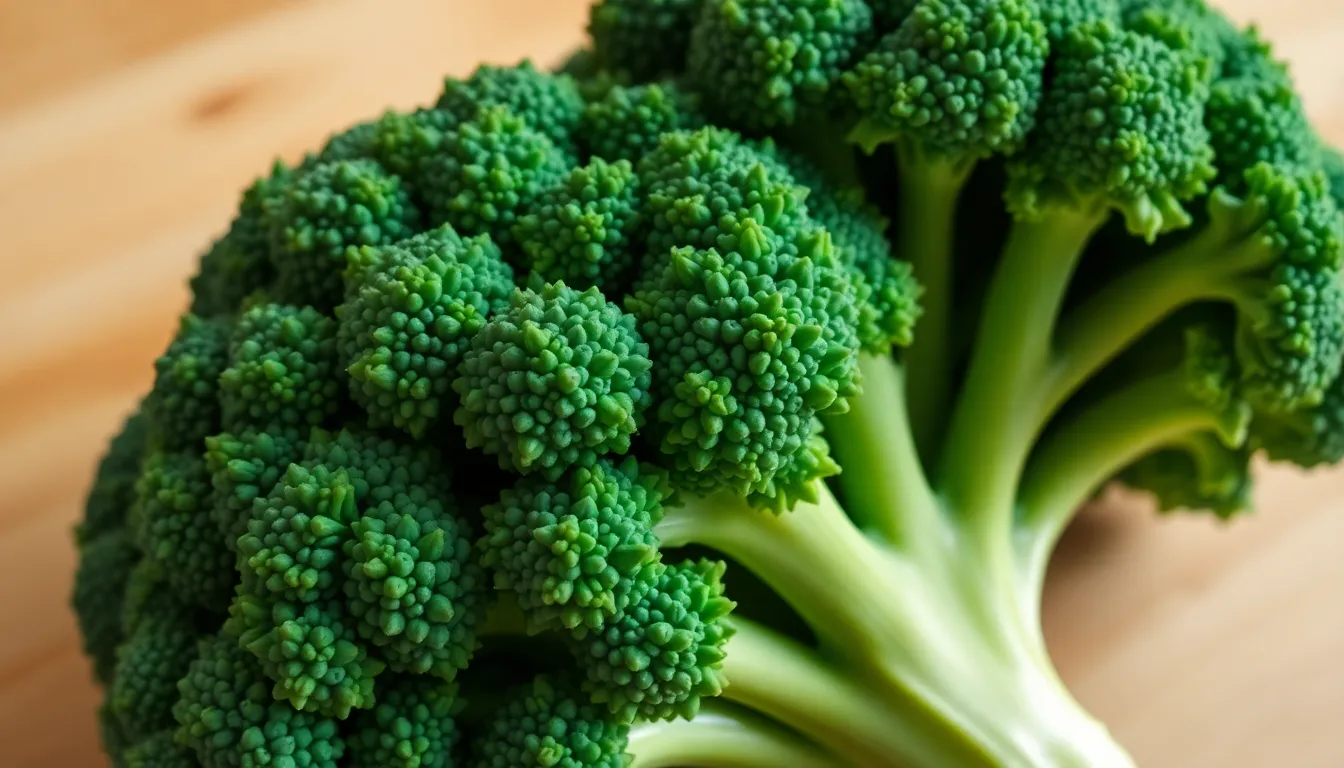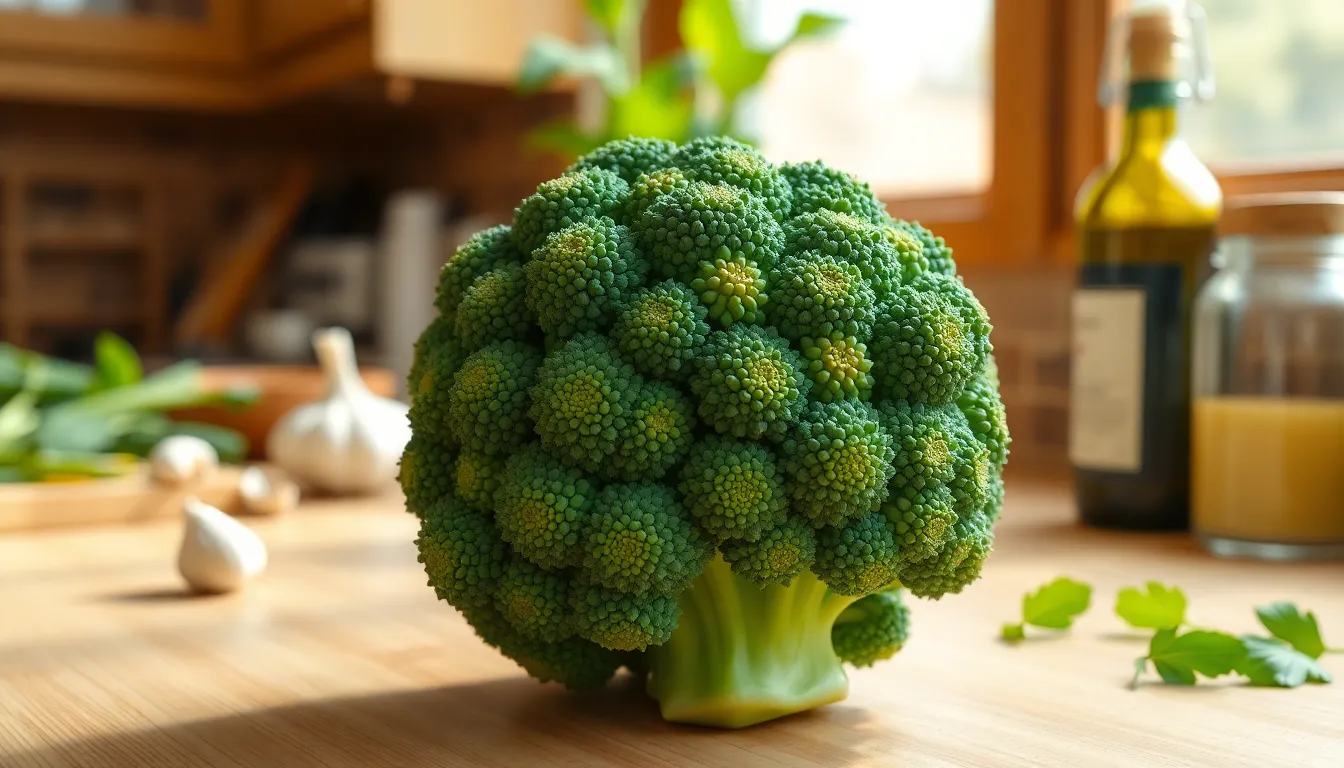Broccoli is a nutritious powerhouse packed with vitamins and minerals. However, knowing when this vibrant vegetable has gone bad is essential to ensure both health and taste. Fresh broccoli not only enhances meals but also provides a plethora of health benefits. Unfortunately, it doesn’t last forever.
Identifying spoilage can be tricky, especially for those unfamiliar with the signs of bad broccoli. From changes in color to unpleasant odors, several indicators signal that it’s time to say goodbye to this green gem. Understanding these signs can help maintain a healthy diet and reduce food waste. Let’s explore how to recognize when broccoli has seen better days.
Table of Contents
ToggleVisual Signs of Bad Broccoli
Recognizing visual signs of spoilage in broccoli is crucial for ensuring quality and safety. Key indicators help determine its freshness and suitability for consumption.
Color Changes
Fresh broccoli displays a vibrant green color. Broccoli that develops yellow or brown spots indicates spoilage. Brown florets or a dull, faded appearance signals that the vegetable is past its prime. Additionally, dark green areas can indicate rot. If the stems turn dark green or show slimy patches, discard the broccoli immediately.
Wilting or Softness
Healthy broccoli has firm stalks and tightly closed florets. Any signs of wilting or softness suggest deterioration. Broccoli that has a soggy texture or bends easily may harbor spoilage. A harsh crunch upon biting reflects freshness, while limp stalks fail this test. If surface moisture appears excessive, discard the broccoli to avoid risk of foodborne illness.
Smell and Texture Indicators

Identifying signs of spoilage through smell and texture is crucial in determining broccoli’s freshness. Unpleasant odors and slimy textures serve as primary indicators of bad broccoli.
Unpleasant Odors
Broccoli typically emits a fresh, earthy aroma. If broccoli produces a strong or foul smell, it indicates spoilage. An acrid, sulfuric odor suggests the presence of decay, indicating that the vegetable should be discarded immediately. Fresh broccoli lacks any overly pungent scents, so noticing a significant change in odor signals deterioration.
Slimy Texture
Fresh broccoli features a crisp and firm texture. A slimy surface, especially on the florets or stalks, indicates spoilage. This sliminess results from bacterial growth and deterioration, making the broccoli unsafe to eat. When broccoli feels sticky or slippery, it’s best to dispose of it to prevent any potential health risks.
Storage and Handling Tips
Proper storage and handling of broccoli enhances freshness and extends its shelf life. Following specific practices helps maintain its nutritional value and quality.
Best Practices for Storage
- Refrigerate broccoli immediately after purchase to retain freshness.
- Use perforated plastic bags to allow airflow while keeping moisture in check.
- Store broccoli in the vegetable crisper drawer, where temperature and humidity levels are optimal.
- Keep broccoli away from fruits like apples and bananas, as these emit ethylene gas that accelerates spoilage.
- Avoid washing broccoli before storage; moisture promotes mold growth.
How Long Does Broccoli Last?
| Storage Method | Duration |
|---|---|
| Fresh in refrigerator | 3 to 5 days |
| Blanched and frozen | 10 to 12 months |
| Cooked in refrigerator | 3 to 5 days |
Fresh broccoli lasts 3 to 5 days in the refrigerator. For longer storage, blanch and freeze it, preserving quality for 10 to 12 months. Cooked broccoli typically lasts another 3 to 5 days when stored properly.
The Importance of Freshness
Freshness in broccoli guarantees optimal nutrition and flavor. Recognizing the signs of spoilage is crucial for health and waste prevention.
Nutritional Benefits of Fresh Broccoli
Fresh broccoli is packed with essential vitamins and minerals. One cup provides about 135% of the recommended daily intake of vitamin C, contributing to immune health and skin vitality. It contains significant amounts of vitamin K, critical for bone health and blood clotting. Broccoli also offers dietary fiber, enhancing digestive health and promoting satiety. Additionally, it contains antioxidants, such as sulforaphane, which may help reduce the risk of chronic diseases.
Risks of Consuming Bad Broccoli
Eating spoiled broccoli poses various health risks. Decayed broccoli can harbor harmful bacteria, leading to foodborne illnesses like Salmonella or E. coli. Symptoms may include nausea, vomiting, diarrhea, and abdominal cramps. Consuming soft or slimy broccoli often indicates bacterial growth, emphasizing the need for disposal. Mold and foul odors further signal spoilage and should not be ignored, as they can contribute to adverse health effects.
Recognizing when broccoli has gone bad is essential for maintaining health and enjoying its nutritional benefits. By paying attention to its color texture and smell, one can easily identify spoilage. Fresh broccoli should always be vibrant and firm while any signs of yellowing wilting or unpleasant odors indicate it’s time to discard it.
Proper storage techniques can help prolong its freshness but knowing when to throw it out is just as crucial. By staying vigilant about these signs, individuals can minimize food waste and ensure they’re consuming safe and nutritious food. Prioritizing fresh broccoli not only enhances meals but also supports overall well-being.








